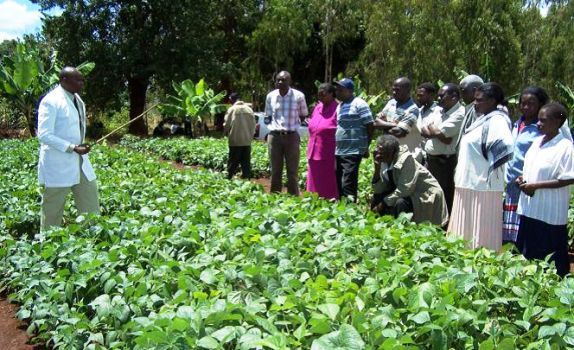The Kenya Agricultural and Livestock Research Organization has released new high yielding disease tolerant cowpea varieties that can produce four tonnes per acre, double the amount of the existing varieties such as zebra and randa.
The varieties Kitui black eye and M66 are tolerant to leaf spot, rust and powdery mildew and are suitable for low, dry areas of North Rift Valley such as Samburu, Baringo, West Pokot, and Trans Nzoia.
The main cowpea producing areas in Kenya are Kitui, Kisii, Migori, Kakamega, Bungoma, Machakos, Makueni, Kwale, Kilifi and Tharaka Nithi.
Cowpeas are leguminous crops that are used to provide green leaves for vegetables and grains as food and can therefore play a crucial role in boosting food security in Kenya where 3.4m Kenyans are at risk of hunger and starvation according to the Food and Agriculture Organization of the United Nations.
Related
Scientists discover low cost preservation method for cowpeas
Passion fruits, French beans and snap peas farmers win bid to supply Nairobi businessman
Molo farmer intercrops potato and garden peas, earning year round income
According to Japhet Tanui, a crops expert at Mace Foods, optimum cowpea production is done at a spacing of two feet by one foot between plants. The seeds should be planted at a depth of four to five centimeters deep.
The peas do well in well drained soils with an optimum Ph of 6-7.5 and an altitude of 0-1600m above sea level receiving annual rainfall of 300 to 65omm as too much rain leads to abortion of flowers.
“For higher yields I recommend mavuno fertilizer, a compound blended fertilizer that contains 11 essential plant nutrients such as nitrogen at the rate of 75kg per acre,” said Tanui.

Cowpeas can be intercropped with maize, sorghum or millet and since it is a leguminous plant it would help fix nitrogen in the soil thereby enhancing yields.
First weeding of the crop is done two weeks after germination of the seeds and the subsequent one just before flowering.
To control diseases such as powdery mildew spray with Dinocap, Benomyl or Triadimefon.
The leaves of the crop should be picked when young and tender and can be picked for up to three times without affecting grain yields.
For grains, pods should be harvested when they turn brown and droop before they are threshed and grains dried in the sun for two to three days.
To protect the stored grains against pests, super actellic dust should be applied at the rate if 50g per bag. Alternatively, neem leaves or wood ash at four to six kilos per bag may be used.
Crop residues can be used as livestock fodder.
In Kenya, a cowpea farmer can earn up to Sh7200 per 90kg bag at current market prices in the towns of Eldoret, Kisumu and Malindi according to Soko+, a digital commodity trading system linking smallholder farmers to retailers and bulk purchasers of produce.
In Nairobi a 90kg bag is retailing at Sh6,000, while Mombasa and Nakuru have the lowest prices at Sh5400 per 90kg bag.
















Comments powered by CComment